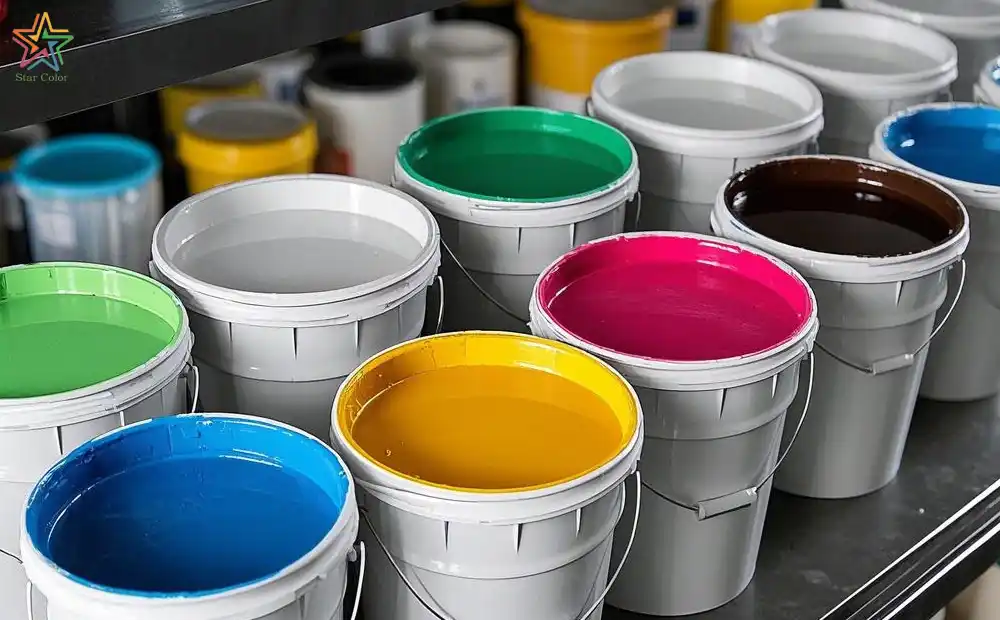 RU
RU
 EN
EN
 CN
CN

Position:HOME > Ink Knowledge > Other Printing Ink
Date: May 14 2025 From: Star Color Views:
The density of printing ink directly impacts print quality.
First, density is closely related to the ink’s fluidity and transfer properties. Lower-density inks (e.g., gravure or flexographic inks) typically exhibit lower viscosity, making them suitable for high-speed printing. Conversely, higher-density inks (e.g., screen printing or metallic inks) have poorer flow characteristics, requiring adjustments to printing pressure or screen mesh parameters to ensure uniform ink layer deposition.
Second, density correlates positively with pigment concentration and covering power. High-density inks deliver richer colors and stronger opacity. However, excessive density can lead to pigment settling, causing uneven color distribution. This necessitates stirring or adding dispersants to maintain stability. For functional inks (e.g., conductive inks), density directly affects the dispersion of conductive particles, influencing the reliability of circuit performance.
Therefore, achieving high-quality prints requires precise alignment of ink density with substrate properties, printing speed, and desired effects. Additionally, optimization must consider drying methods, ambient temperature, humidity, and other factors.
| Ink Type | Density Range (g/cm³) | Main Components | Characteristics & Typical Applications |
|---|---|---|---|
| Gravure Ink | 0.9–1.1 | Volatile solvents (toluene, ethyl acetate), resins, high pigment content | Fast drying, suitable for plastic film packaging printing |
| Solvent-based Flexo Ink | 0.9–1.0 | Alcohol solvents, resins, pigments | Low viscosity, used for flexible packaging and labels |
| Water-based Flexo Ink | 1.0–1.1 | Water, resins, pigments | Eco-friendly, common in carton and food packaging |
| Offset Ink | 1.0–1.2 | Mineral/vegetable oils, resins, pigments | High-speed printing, widely used for books and commercial prints |
| UV-Curing Ink | 1.2–1.3 | Acrylate monomers, photoinitiators, pigments | UV curing, abrasion-resistant, used in electronics and glossy prints |
| Screen Printing Ink | 1.1–1.4 | High-viscosity resins, plasticizers, dense pigments | Thick ink layers for textiles, glass, and ceramics |
| Conductive Ink | 1.2–2.0 | Silver/copper/carbon particles, resin-based carriers | High conductivity for printed circuits and flexible electronics |
| Metallic Ink | 1.4–1.8 | Aluminum/copper flakes, resins, solvents | Metallic effects for luxury packaging and decorative prints |
